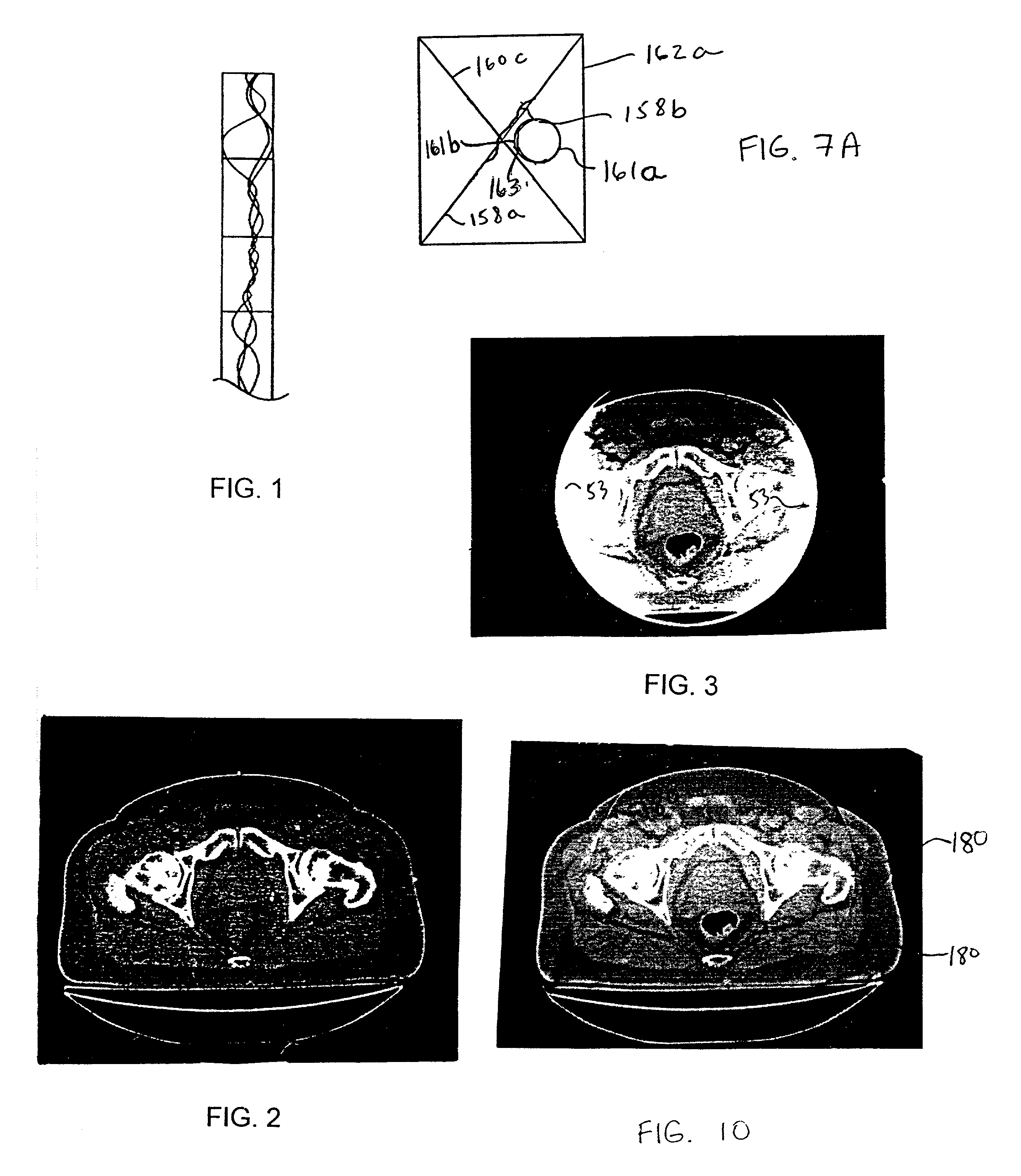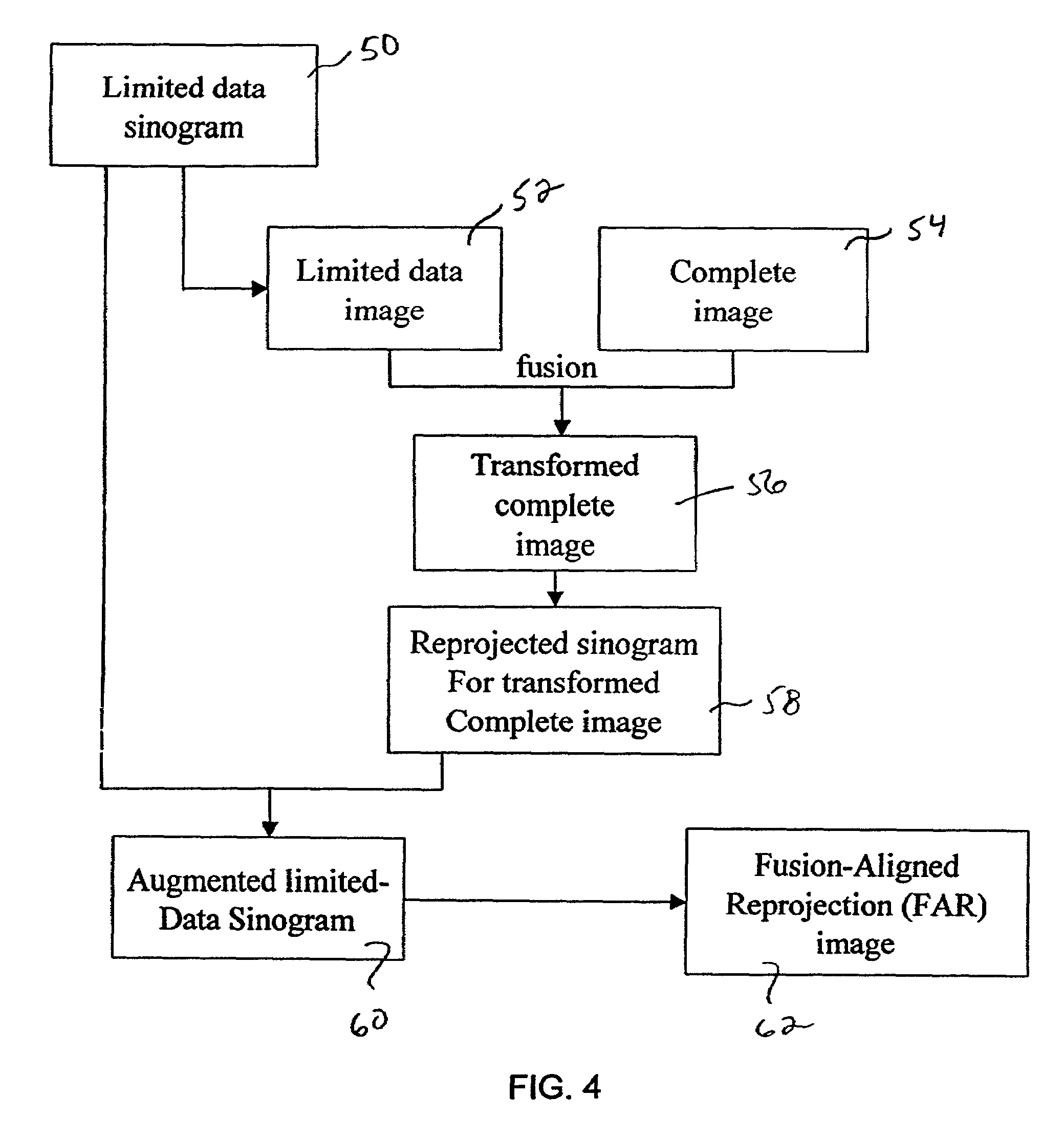System and method for fusion-aligned reprojection of incomplete data
a technology of incomplete data and fusion alignment, applied in the field of radiological and radiation therapy, can solve the problems of inaccurate targeting, irregular white border, and inability to accurately target the data set obtained on the day of treatment to be used for preparing the patient model, etc., to achieve accurate targeting, accurate radiation application, and reduced damage to healthy tissue
- Summary
- Abstract
- Description
- Claims
- Application Information
AI Technical Summary
Benefits of technology
Problems solved by technology
Method used
Image
Examples
Embodiment Construction
[0029]A preferred method in accordance with the present invention is shown in the flowchart of FIG. 4. A limited data sinogram 50 representing the treatment area is obtained from a patient. In one preferred embodiment of the present invention, the limited data sinogram 50 is prepared near the time that the patient is receiving his or her radiation treatment. However, the limited data sinogram 50 may be obtained at any time.
[0030]The limited data sinogram 50 is reconstructed to a limited data image 52, as seen in the example of FIG. 3, and represented schematically in FIG. 6 as limited object 156. FIG. 3 contains a significant amount of artifacts such as the white irregular border 53, and some distortion of image values. By way of example, the treatment area targeted in FIG. 3 is a prostate gland. The method can be applied to images of any part of the body, or be used in veterinary or radiological applications.
[0031]A complete image 54 of the same patient and same treatment area is s...
PUM
 Login to View More
Login to View More Abstract
Description
Claims
Application Information
 Login to View More
Login to View More - R&D
- Intellectual Property
- Life Sciences
- Materials
- Tech Scout
- Unparalleled Data Quality
- Higher Quality Content
- 60% Fewer Hallucinations
Browse by: Latest US Patents, China's latest patents, Technical Efficacy Thesaurus, Application Domain, Technology Topic, Popular Technical Reports.
© 2025 PatSnap. All rights reserved.Legal|Privacy policy|Modern Slavery Act Transparency Statement|Sitemap|About US| Contact US: help@patsnap.com



